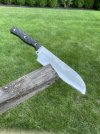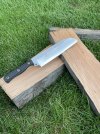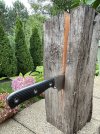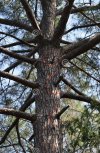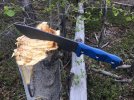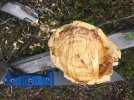Sorry for all the posts, but this thread is instructive in many ways.
Your comments about machetes is accurate- they’re durable on purpose. The steel is simple and the heat treat is rather soft so the worst you would see is edge rolling. It’s by design.
I’d let our resident machete expert
 FortyTwoBlades
FortyTwoBlades
weigh in here, but I believe machetes are mostly intended for rather soft, usually green vegetation- situations where the mass of the free standing target is low, but the material provides little resistance.
I use one fairly regularly and I have not had great luck on free standing dead branches. If I support the branch against something else, or lop it off at the trunk (which provides support) the machete does just fine.

